Aquatic Invertebrates
Media
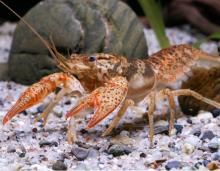
Species Types
Scientific Name
Faxonius hylas (formerly Orconectes hylas)
Description
The woodland crayfish is stout, reddish tan to dark brown, with numerous blackish specks and blotches on the pincers, carapace, and abdomen. It occurs only in Missouri, especially in the Black River and its tributaries.
Media
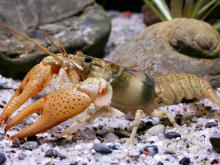
Species Types
Scientific Name
Faxonius ozarkae (formerly Orconectes ozarkae)
Description
The Ozark crayfish is light brown to reddish brown with numerous black specks on the pincers and often on the abdomen as well. The pincers are broad and powerful. It lives in the White and Black stream systems.
Media

Species Types
Scientific Name
Faxonius medius (formerly Orconectes medius)
Description
The saddleback crayfish has a bold blackish band across the hind margin of the carapace and lacks dark blotches or specks. The pincers are broad and powerful. It occurs in the Big and Meramec river drainages.
Media
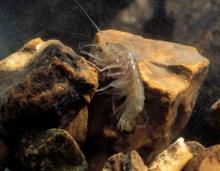
Species Types
Scientific Name
Species in the crustacean order Amphipoda
Description
Often overlooked by people, but eagerly sought by fish, Missouri’s amphipods resemble shrimplike sowbugs. Scuds live in various aquatic habitats, and several species inhabit caves.
Media

Species Types
Scientific Name
Venustaconcha ellipsiformis and V. pleasii
Description
These small mussels use darters, a type of fish, as hosts for their young.
Media
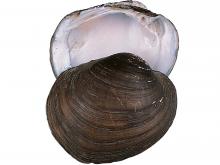
Species Types
Scientific Name
Lampsilis abrupta
Description
This endangered native mussel lives in flowing waters of large streams among gravel and cobble.
Media

Species Types
Scientific Name
Bivalve molluscs in order Unionoida
Description
Secretive and seldom seen, freshwater mussels are extraordinarily diverse in Missouri. We have nearly 70 species within our borders. Many are declining, and several are endangered.
Media

Species Types
Scientific Name
Over 20 Missouri species in former subclass Prosobranchia
Description
Gilled snails are one of two main groups of aquatic snails in Missouri (the other group is the "lunged" snails). Gilled snails, or prosobranchs, breathe with gills and possess a hard trapdoor-like operculum. They are most common in the Ozarks.
Media
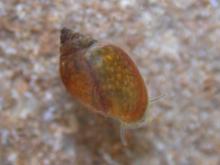
Species Types
Scientific Name
Over 30 Missouri species in former subclass Pulmonata
Description
Pulmonate, or lunged snails breathe via a lunglike pulmonary cavity, and they lack the hard trapdoor-like operculum found in gilled snails. Except for in the Ozarks, pulmonate snails predominate in most of the aquatic regions in our state.
Media

Species Types
Scientific Name
Gyraulus, Helisoma, Menetus, Micromenetus, Planorbula spp.
Description
Ramshorn snails are easy to identify at a glance, because the shell is a flat, disklike coil. Like other pulmonate aquatic snails, they lack the hard horny “trapdoor” possessed by other types of aquatic snails.
See Also
About Aquatic Invertebrates in Missouri
Missouri's streams, lakes, and other aquatic habitats hold thousands of kinds of invertebrates — worms, freshwater mussels, snails, crayfish, insects, and other animals without backbones. These creatures are vital links in the aquatic food chain, and their presence and numbers tell us a lot about water quality.





















